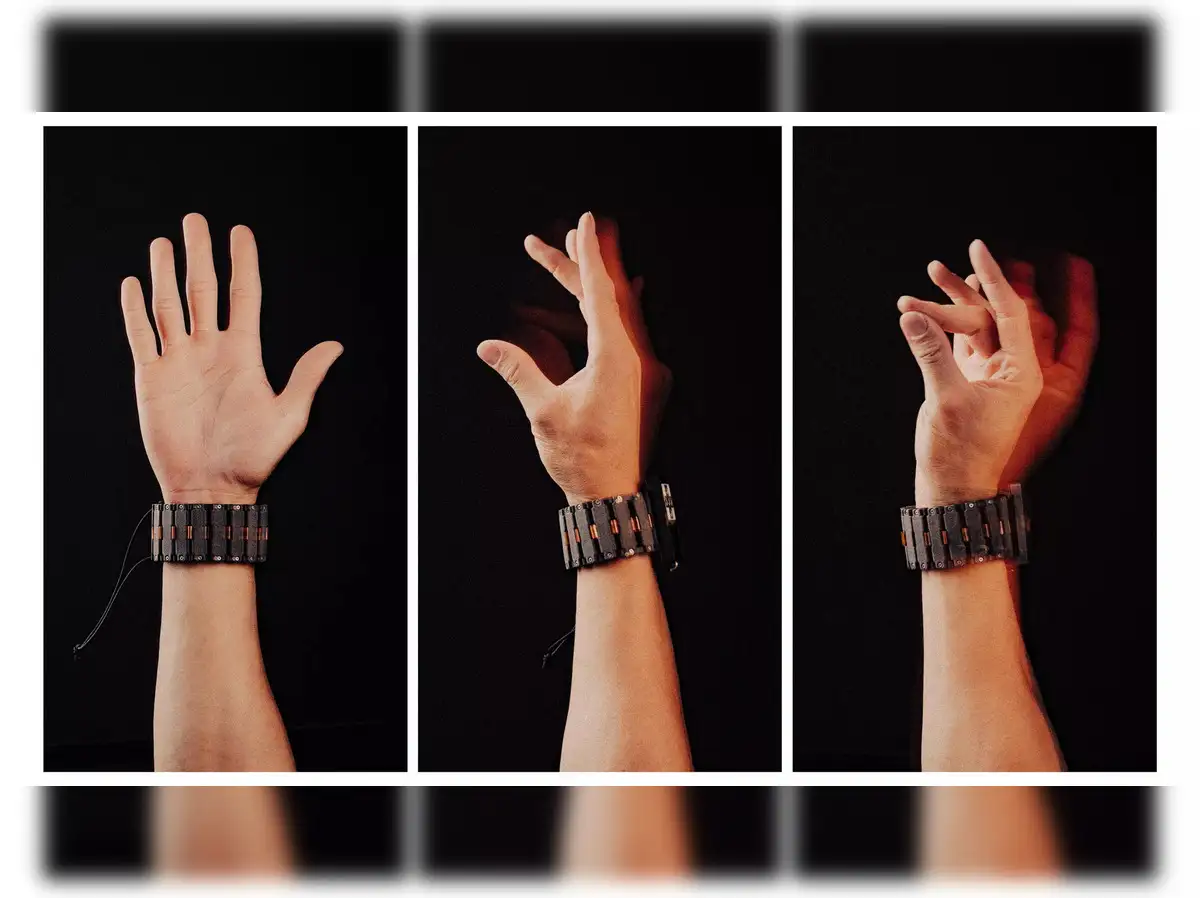
Here is a concise summary of the news article: The article discusses the challenges faced by incident response teams in today's cloud-native world, where critical application failures require manual correlation of observability data across multiple services. To address this, the article introduces an AI-powered incident response system using Amazon Bedrock and Amazon Nova Pro. This system automates incident analysis by ingesting data from AWS observability tools, identifying potential causes of outages, ranking them by probability, and suggesting troubleshooting steps. The solution is demonstrated using a sample application, PetShop, and the code is available on GitHub. By combining AWS observability services with generative AI, the article claims that organizations can dramatically reduce mean time to resolve (MTTR) and improve incident communications, while scaling to meet the growing complexity of modern cloud architecture.
Read full article
July 24, 2025 • By Chris Gampat
The article discusses the potential for cameras to incorporate voice commands, similar to smartphones. The author, who is legally blind, suggests that voice controls could make photography more accessible. They propose that cameras could be programmed to perform specific actions, such as taking a photo or adjusting settings, in response to voice commands. This could be achieved through a menu system, with the camera only listening for specific commands when in a designated mode. The author notes that similar technology has existed in the past, but it has not been integrated into cameras themselves. They believe that voice controls could enhance the photography experience and make cameras more competitive with smartphones.

July 24, 2025 • By ANI
The Indian IT sector is expected to see flat revenue growth of 0-2% in the current financial year due to macroeconomic uncertainties and cost pressures. Despite challenges, IT companies are investing in areas like cloud transformation, data analytics, and AI to stay competitive. The sector has strong long-term growth opportunities, but rising uncertainty in the US market, which accounts for a large portion of Indian IT firms' revenue, is a significant concern. The report suggests that the IT-software industry is re-aligning its offerings to cater to evolving client requirements and emerging technologies.

July 24, 2025 • By Cade Metz
Meta has unveiled a wristband that uses AI to interpret muscle signals, allowing users to control devices with subtle movements or even intent. The wristband, developed by Meta's Reality Labs, uses electromyography (EMG) to gather electrical signals from muscles in the forearm, which can be read from outside the skin. With a little practice, users can control devices without physically moving, simply by intending to make a movement. The technology has the potential to provide life-changing benefits for users with physical disabilities and could be used to control devices such as laptops, smartphones, and smart glasses. Meta plans to fold the technology into products over the next few years.

July 24, 2025
Researchers at the USC Viterbi School of Engineering have developed an AI model called Allegro-FM, which can simulate the behavior of billions of atoms simultaneously. This breakthrough has led to the discovery of a way to recapture carbon dioxide emitted during concrete production and store it back into the concrete, making it carbon-neutral. The model can test different concrete chemistries virtually, accelerating the development of sustainable concrete. Allegro-FM has demonstrated 97.5% efficiency in simulating over four billion atoms, representing a 1,000-fold increase in computational capabilities compared to conventional approaches. The researchers believe this technology can help reduce the 8% of global CO2 emissions currently attributed to concrete production. Additionally, the simulated concrete has shown potential to be more durable and long-lasting, with a possible lifespan of over 2,000 years, compared to the average 100-year lifespan of modern concrete.

July 24, 2025
A recent study by Common Sense Media found that over 70% of teens have used AI companions, with 34% reporting daily usage. These AI companions, such as Character.AI and Replika, are designed to provide emotional support, companionship, and conversations that feel human-like. Teens are using AI for guidance on everyday decisions, problem-solving, and personal advice, with 31% saying their conversations with AI companions are "as satisfying or more satisfying" than talking with real friends. Experts worry that AI may redefine human relationships and exacerbate crises of loneliness and youth mental health. The study's lead author, Michael Robb, notes that adolescence is a critical time for developing social skills and independence, and AI companions should complement, not replace, real-world interactions. The nonprofit analyzed popular AI companions and found ineffective age restrictions, sexual material, and harmful content. Common Sense Media's CEO, Jim Steyer, supports AI innovation but recommends that minors not use AI companions due to the potential risks. Researchers and educators are concerned about the cognitive costs of relying heavily on AI, particularly in creativity, critical thinking, and social skills. Teens are using AI to explore their sexuality, write emails, and craft outlines, raising concerns about their ability to make decisions without AI feedback. The issue is not just with the AI technology itself, but also with how kids live in the modern world, spending many hours in front of screens and substituting machines for human interaction. Experts warn that parents and policymakers need to be aware of the potential dangers of children forming relationships with chatbots and take steps to mitigate the risks.

July 24, 2025 • By Jonas, Maximilian & Philip
The article discusses the challenges of implementing AI-powered development in enterprise settings. While AI coding can be impressive, its adoption in companies often leads to mixed outcomes due to a lack of structured processes. The authors introduce Dibe Coding, a lightweight, structured process for working with AI coding agents that doesn't rely on specific tools. Dibe Coding consists of several steps: 1. Delegation: deciding which tasks to delegate to AI. 2. Definition: defining the task and its context before handing it over to AI. 3. Prompting: initiating the AI session with structured artifacts. 4. Review and decide: evaluating the AI's output and deciding on the next step. 5. Follow-up action: choosing an action based on the review, such as refining, redoing, dividing, or escalating the task. The article emphasizes the importance of a structured process in successful AI-native development, allowing developers to share techniques, adopt best practices, and discuss their approach in a structured way. The authors also highlight the need for critical thinking, judgment, and decision-making in the review and decide step, as well as the importance of staying in control and guiding the AI output. The Dibe Coding process is designed to help developers think clearly, work efficiently, and stay in control, transforming AI coding from scattered experiments into scalable workflows. The article concludes by inviting readers to follow the authors on LinkedIn and YouTube for deeper dives into AI-native development and to try the AI-powered Theia IDE to experience Dibe Coding firsthand.

July 24, 2025
Here is a concise summary of the news article: In 2025, Python is the programming language most linked to six-figure salaries. To land a high-paying job, it's essential to learn and apply Python within specialized fields like artificial intelligence, data science, cybersecurity, and automation. The article highlights five free, targeted certifications that can prepare individuals for high-paying roles, including data science, machine learning engineering, and cybersecurity. Having a solid base in programming principles and mastering the Pandas library are crucial for success. By focusing on a high-demand area and obtaining certifications, individuals can significantly boost their market value and land lucrative careers.

July 23, 2025 • By Shishir Sinha
The Central Board of Direct Taxes (CBDT) has seen significant results from its 'NUDGE' strategy, which uses data analytics to identify potential tax evasion. Over 30 taxpayers have declared foreign assets, and false claims of deductions have reduced. The CBDT Chairman, Ravi Agrawal, stated that the department's systems create a 360-degree profile of taxpayers' financial transactions, flagging inconsistencies and enabling the identification of high-risk cases. The 'NUDGE' campaigns have led to 62% of taxpayers revising their returns and declaring foreign assets worth ₹29,208 crore. The updated return facility has also seen success, with 88,92,395 updated ITRs filed, generating ₹9,577.06 crores in additional taxes. The CBDT plans to further harness AI and machine learning to enhance risk-assessment capabilities and improve taxpayer experience.

July 23, 2025 • By Lucas Waye
Here is a concise summary of the news article: Meta has developed a Privacy Aware Infrastructure (PAI) to streamline data flows while ensuring purpose limitation and transparency. PAI leverages automation to reduce the overhead associated with privacy requirements, allowing engineers to focus on building innovative products. A key component of PAI is Policy Zones, which controls how data flows in complex systems and remediates data flow at scale. Policy Zones uses Information Flow Control (IFC) principles to offer a durable and sustainable approach to data protection. The system has been integrated into Meta's batch processing systems, including its data warehouse, to protect users' messaging data. Policy Zones enforces purpose-use limitation by tracking and enforcing policies across complex relationships between datasets. The system uses a Unified Programming Model (UPM) to parse SQL queries and translate them into semantic trees, which capture the inputs, outputs, and transformations of each data movement step. Policy Zones has been successfully deployed in Meta's data warehouse, allowing engineers to write batch processing queries that access datasets with heterogeneous purpose-use requirements. The system has also been integrated into machine learning training workflows, enabling users to define purpose-use requirements for their models. Overall, Policy Zones enables developers to quickly innovate in Meta's data warehouse while respecting various privacy requirements on the data they are using. The system has hit major milestones, but there are still opportunities for improvement, including reducing friction through generative AI and closing the gap on opaque operators.

July 23, 2025 • By Vincent Nguyen
Meta has developed a neural interface wristband that uses surface electromyography (sEMG) to detect electrical signals from muscles, allowing users to control computers without touching any device. The wristband, called the sEMG-RD, can translate subtle hand movements into digital commands, potentially replacing traditional keyboards, mice, and touchscreens. It features 16 electrode pods that capture electrical signals from muscle contractions, and can distinguish between different types of hand movements with high accuracy. The device requires no individual calibration and can be used immediately, making it a significant leap forward in human-computer interaction. The technology has the potential to change how we interact with devices, and could be particularly useful for users with limited mobility.

July 23, 2025 • By Jon Stojan
Here is a concise summary of the news article: UK businesses are under pressure to digitize rapidly, but traditional service agencies are struggling to deliver tech solutions quickly and at scale. This has created an opportunity for AI-driven agencies to step in and address the digital delivery bottleneck. These agencies use technologies like machine learning and automation to streamline their services, making high-quality digital solutions accessible to small and medium-sized enterprises (SMEs) and startups. AI-driven agencies offer fast, affordable, and efficient solutions, which is particularly attractive in a post-Brexit, cost-conscious UK economy. By combining human expertise with AI efficiency, these agencies are redefining what efficient, affordable, and scalable digital service looks like in the UK.

July 23, 2025 • By Maria Deutscher
The White House has released a policy paper called the AI Action Plan, which includes over 90 recommendations for the federal government's approach to artificial intelligence. The plan focuses on streamlining the procurement process for AI software, promoting the development of AI infrastructure, and reducing regulatory barriers. It also proposes measures to address energy demands and improve transmission infrastructure for AI data centers. Additionally, the plan aims to support machine learning research and create AI Centers of Excellence for collaboration between researchers and companies. The White House will collect public feedback on federal rules that hinder AI innovation and work with agencies to simplify compliance tasks. However, some experts warn that the approach may underestimate public interest concerns, such as privacy and labor displacement, and could face pushback from civil society groups and legal challenges.

July 23, 2025 • By PYMNTS
Here is a concise summary of the news article: Financial institutions are engaged in a "resource war" to acquire talent and technology in quantum computing, a field that could revolutionize risk modeling, portfolio optimization, and secure communications. Recent breakthroughs in quantum teleportation and advancements in quantum hardware, cloud access, and software frameworks have pushed institutions to move beyond research and into operational pilots. While widespread adoption is still 5-10 years away, first-mover advantages in areas like derivatives pricing and infrastructure security are significant, and some banks, like BMO Financial Group, are already preparing to reap the benefits of quantum computing. Central banks, such as the Federal Reserve Bank of Atlanta and the Bank of Canada, are also exploring the potential of quantum finance.

July 23, 2025 • By John Gruber
Here is a concise summary of the news article: The podcast discusses Apple's 40-year history of developer relations, from its early days to the current App Store. The conversation highlights how Apple's near-bankruptcy in the 1990s shaped its control-focused approach and the need for an "App Store 3.0" reset. Key takeaways include: * Apple's early success came from nurturing third-party developers, even spinning off its own apps to avoid competing with outsiders. * Microsoft's involvement in Apple's early days, including Bill Gates' enthusiasm for the Macintosh platform. * The evolution of Apple's developer relations, from a partnership vibe to a more strict and controlling approach as the App Store grew. * The current state of the App Store, where indie devs pay millions in fees while giants like Meta pay almost nothing, and the need for a reset to ensure Apple remains a vibrant platform. The conversation also touches on the history of Apple's top executives, including Greg Joswiak, Phil Schiller, and Eddy Cue, who have been instrumental in shaping the company's developer relations. The discussion highlights the importance of understanding Apple's history and its impact on the current state of the App Store.